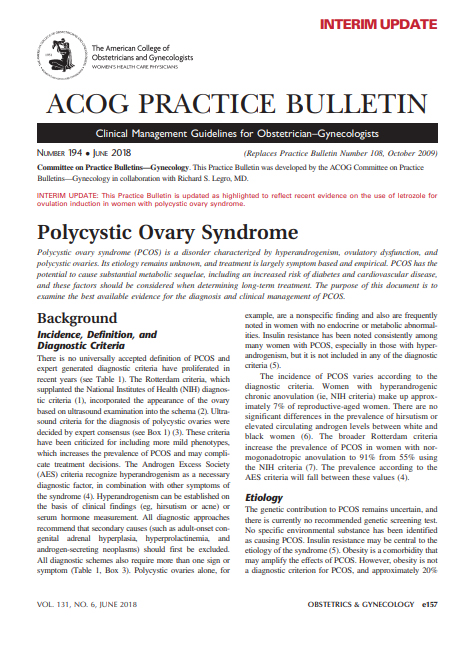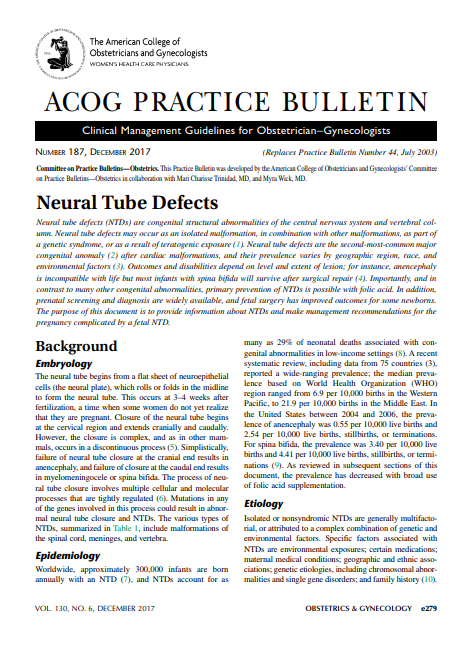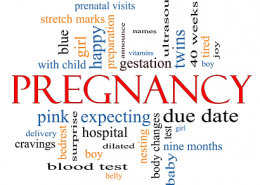ULTRASOUND IN PREGNANCY
Obstetric ultrasonography is an important and common part of obstetric care in the United States. The purpose of this document is to present information and evidence regarding the methodology of, indications for, benefits of, and risks associated with obstetric ultrasonography in specific clinical situations. Portions of this Practice Bulletin were developed from collaborative documents with […]
Read MoreVAGINAL BIRTH AFTER CESAREAN DELIVERY
Trial of labor after cesarean delivery (TOLAC) refers to a planned attempt to deliver vaginally by a woman who has had a previous cesarean delivery, regardless of the outcome. This method provides women who desire a vaginal delivery the possibility of achieving that goal—a vaginal birth after cesarean delivery (VBAC). In addition to fulfilling a […]
Read MoreTHROMBOEMBOLISM IN PREGNANCY
Women who are pregnant or in the postpartum period have a fourfold to fivefold increased risk of thromboembolism compared with nonpregnant women (1, 2). Approximately 80% of thromboembolic events in pregnancy are venous (3), with a prevalence of 0.5–2.0 per 1,000 pregnant women (4–9). Venous thromboembolism (VTE) is one of the leading causes of maternal […]
Read MorePRELABOR RUPTURE OF MEMBRANES
Preterm delivery occurs in approximately 12% of all births in the United States and is a major factor that contributes to perinatal morbidity and mortality (1, 2). Preterm prelabor rupture of membranes (also referred to as premature rupture of membranes) (PROM) complicates approximately 3% of all pregnancies in the United States (3). The optimal approach […]
Read MorePOLYCYSTIC OVARY SYNDROME
Polycystic ovary syndrome (PCOS) is a disorder characterized by hyperandrogenism, ovulatory dysfunction, and polycystic ovaries. Its etiology remains unknown, and treatment is largely symptom based and empirical. PCOS has the potential to cause substantial metabolic sequelae, including an increased risk of diabetes and cardiovascular disease, and these factors should be considered when determining long-term treatment. […]
Read MoreOBESITY IN PREGNANCY
Obstetrician–gynecologists are the leading experts in the healthcare of women, and obesity is the most common healthcare problem in women of reproductive age. Obesity in women is such a common problem that the implications relative to pregnancy often are unrecognized, overlooked, or ignored because of the lack of specific evidence-based treatment options. The management of […]
Read MoreNEURAL TUBE DEFECTS
Neural tube defects (NTDs) are congenital structural abnormalities of the central nervous system and vertebral column. Neural tube defects may occur as an isolated malformation, in combination with other malformations, as part of a genetic syndrome, or as a result of teratogenic exposure Neural tube defects are the second-most-common major congenital anomaly after cardiac malformations, […]
Read MoreINHERITED THROMBOPHILIAS IN PREGNANCY
Inherited thrombophilias are associated with an increased risk of venous thromboembolism and have been linked to adverse outcomes in pregnancy. However, there is limited evidence to guide screening for and management of these conditions in pregnancy. The purpose of this document is to review common thrombophilias and their association with maternal venous thromboembolism risk and […]
Read MoreGESTATIONAL DIABETES MELLITUS
Gestational diabetes mellitus (GDM) is one of the most common medical complications of pregnancy. However, debate continues to surround the diagnosis and treatment of GDM despite several recent large-scale studies addressing these issues. The purposes of this document are the following: provide a brief overview of the understanding of GDM, review management guidelines that have […]
Read MoreFetal Growth Restriction
Fetal growth restriction, also known as intrauterine growth restriction, is a common complication of pregnancy that has been associated with a variety of adverse perinatal outcomes. There is a lack of consensus regarding terminology, etiology, and diagnostic criteria for fetal growth restriction, with uncertainty surrounding the optimal management and timing of delivery for the growth-restricted […]
Read More


















